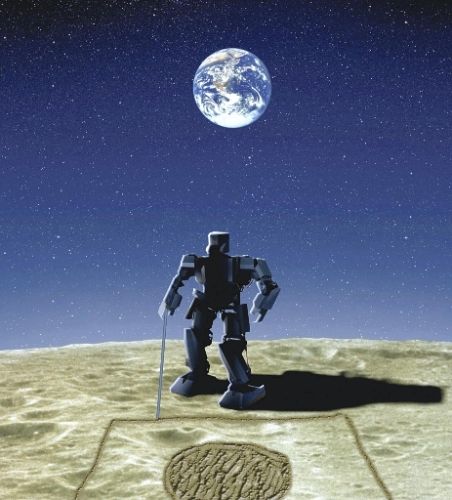Bipedal Japanese Robot Will Walk on the Moon by 2015
The privately-funded Japanese robot will plant a flag and, um, yeah, that's it

Japan’s robot love is set to go out of this world with a plan to put a bipedal robot on the moon by 2015. Yet the bipedal robot’s main mission seems curiously lacking in ambition – it’s tasked only with planting the Japanese flag on the lunar surface, according to CrunchGear.
The Japanese government had previously announced plans to send a robot to the moon by 2020, with a human astronaut following up a decade later. But the Osaka-based Space Oriented Higashiosaka Leading Association (SOHLA) would seem to be cutting ahead of the Japanese space agency.
SOHLA previously launched a Maido-1 microsatellite in 2009, and has accordingly named its upcoming robot Maido-kun. We assume that the “kun” honorific here refers to the robot’s junior status to its human handlers, lest Maido gets any ideas.
The six private companies which form the SOHLA coalition plan to spend $10.5 million on making Maido-kun lunar-capable. They will also draw on the expertise of the Japan Aerospace Exploration Agency (JAXA), which had previously ditched its own plans for bipedal robots back in 2005 in favor of wheeled robots. But Maido-kun could hitch a ride with JAXA’s planned robot rover headed for the moon around the same time.
“Humanoid robots are glamorous, and they tend to get people fired up,” said Noriyuki Yoshida, a SHOLA board member. “We hope to develop a charming robot to fulfill the dream of going to space.”
We’re fans of Japan’s efforts to push the humanoid appearances and functions of robots, ranging from mildly creepy robo-clones to also creepy mind-controlled Asimo robots. But this latest plan for humanoid robots seems a bit kookier than past efforts, given the mission’s high public relations value and perhaps nonexistent scientific value.
If the private coalition does forge ahead and create a Maido-kun capable of navigating the rough lunar terrain on two feet, we’ll rethink our early doubts. And maybe the Japanese robot could provide lessons for a later version of NASA’s Robonaut-2, which will be the first android resident of the International Space Station.
[via CrunchGear and Pink Tentacle]